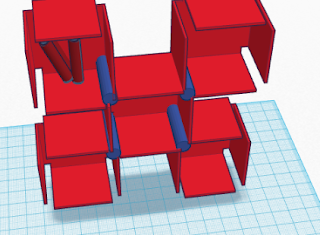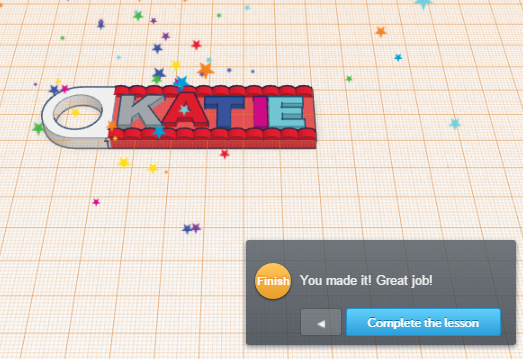


Reflection on Criteria A
Reflection on the research of printers
What I did? (What did you do to finish your project?)
I researched on the printers and posted pictures and collect different information from different websites.
What I enjoyed? (Write about what you liked most in the project)
The part I most loved when I had to post pictures as it looked colorful in my blog.
What I found difficult?( Write about any part of the project that you found hard to do?)
The part I found difficult was to gather information from many websites as it was confusing and some websites had the wrong information.
What really worked? (Write about any part that you thought worked well)
The part I thought worked well was the information on printers and collecting the names of the people who found the type of printers.
Next Time (Write about what you would do differently next time)
The next time the color in my blog should be a bit duller as the colors now are too vibrant and bright.
Reflection on Tinker CAD tutorials
What I did? (What did you do to finish your project?)
I followed the instructions and finished two tutorials by concentrating on the task.
What I enjoyed? (Write about what you liked most in the project)
I enjoyed creating different objects with a little bit of help as I was new to tinker cad
what I found difficult? (Write about any part of the project that you found hard to do?)
The part I found difficult was searching for the objects in tinker cad as they were on the side and small.
What really worked? (Write about any part that you thought worked well)
There is nothing in specific that I thought worked well as the whole tutorial was interesting but putting the objects together worked well.
Next Time (Write about what you would do differently next time)
Next time I would try creating the objects myself so I would not need much help.
Reflection on Tinker CAD objects
what I did? (What did you do to finish your project?)
I did two objects given by my teacher one was a ship type of object and the other one was like penguin shaped thing.
What I enjoyed? (Write about what you liked most in the project)
I enjoyed finding the parts and putting them together to get the final product.
What I found difficult? (Write about any part of the project that you found hard to do?)
I did not find anything difficult except the penguin shape took me some time to think how to do it.
what really worked? (Write about any part that you thought worked well)
Everything worked nice and perfect . there is nothing in specific.
Next Time (Write about what you would do differently next time)
The next time I would analyze it first and then start with my project.
I am Tanya from eism. I had worked on 3d designing and tinker cad. We were asked to make any thing we like which people will buy as it could help them in some way many people did tankers and doll houses and poker ball and so I did a shelf which is modern, designer and products can be displayed with ease. Everyone had to make a sketch of their product actually two of them one was your sketch of the actual and the other was to modify your product so it doesn’t have any disadvantages. I had made the second sketch without the sharp corners which might poke some children or old adults who can’t see properly or hurt even parent running in hurry for work so it is always better to stay on the safe side. My shelf is about 6 to 5 foot tall.
PEER EVALUATION DONE BY AASHNA
This peer evaluation is done by aashna. Tanya's final idea is a book shelf. Looking at Tanya's work her 3 d models is really good and attractive in terms of its design and shape. It is a unique design and is something that is indeed useful to all genders and ages. Like she has mentioned that the purpose of the shelf is to keep stuff including books and also other objects, this is good way to attract the people to come and buy her 3 d model. The choice of color is good but she could have chosen a better color option to a more bright color like a yellow or pink, etc. It is a project when someone will look at it they surely will want to buy it. Besides her shelf her blog is also overall really organised and good. Overall her work is good.
PEER EVALUATION DONE BY AASHNA
This peer evaluation is done by aashna. Tanya's final idea is a book shelf. Looking at Tanya's work her 3 d models is really good and attractive in terms of its design and shape. It is a unique design and is something that is indeed useful to all genders and ages. Like she has mentioned that the purpose of the shelf is to keep stuff including books and also other objects, this is good way to attract the people to come and buy her 3 d model. The choice of color is good but she could have chosen a better color option to a more bright color like a yellow or pink, etc. It is a project when someone will look at it they surely will want to buy it. Besides her shelf her blog is also overall really organised and good. Overall her work is good.













